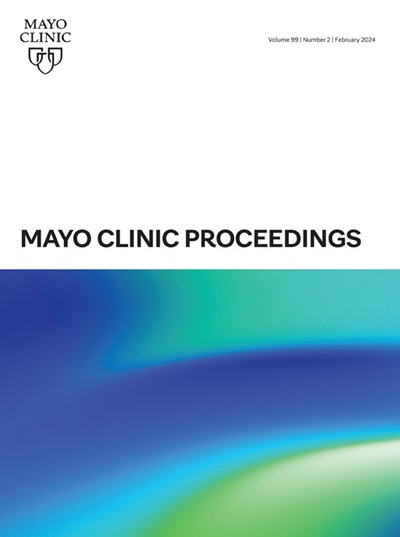三甲胺氧化物及相关代谢物:评估达拉斯心脏研究中的心血管风险。
IF 6.9
2区 医学
Q1 MEDICINE, GENERAL & INTERNAL
引用次数: 0
摘要
目的评估多种族城市一级预防人群中三甲胺 N-氧化物(TMAO)及相关代谢物与不良心血管事件之间的关系:我们对达拉斯心脏研究的 361 名参与者进行了病例对照研究,其中包括 88 名发生过动脉粥样硬化性心血管疾病(ASCVD)事件的参与者和 273 名在 12 年随访期间(2000 年 1 月 1 日至 2015 年 12 月 31 日)年龄、性别和体重指数匹配且未发生过 ASCVD 事件的对照者。通过质谱法测量了血浆中TMAO、胆碱、肉碱、甜菜碱和丁基甜菜碱的水平。通过调整心血管风险因素的条件逻辑回归模型,比较了病例与对照组之间代谢物水平不同的ASCVD发病几率差异:结果:与非 ASCVD 患者相比,ASCVD 患者的 TMAO 和相关代谢物水平较高:我们的研究结果表明,TMAO 和相关代谢物与 ASCVD 事件有独立关联。尽管还需要进一步研究,但TMAO和相关代谢物的测量可能会在初级预防的ASCVD风险分层中发挥作用。本文章由计算机程序翻译,如有差异,请以英文原文为准。
Trimethylamine-N-Oxide and Related Metabolites: Assessing Cardiovascular Risk in the Dallas Heart Study
Objective
To evaluate the association between trimethylamine N-oxide (TMAO) and related metabolites with adverse cardiovascular events in a multiethnic urban primary prevention population.
Methods
We performed a case-control study of 361 participants of the Dallas Heart Study, including 88 participants with an incident atherosclerotic cardiovascular disease (ASCVD) event and 273 controls matched for age, sex, and body mass index without an ASCVD event during 12 years of follow-up (January 1, 2000, through December 31, 2015). Plasma levels of TMAO, choline, carnitine, betaine, and butyrobetaine were measured by mass spectrometry. The differential odds for incident ASCVD by metabolite levels between cases and controls were compared by a conditional logistic regression model adjusted for cardiovascular risk factors.
Results
Participants with incident ASCVD had higher levels of TMAO and related metabolites compared with those without ASCVD (P<.05 for all). Those with plasma TMAO concentrations in quartile 4 had a more than 2-fold higher odds of ASCVD compared with those in quartile 1 (odds ratio, 2.77 [95% CI, 1.05 to 7.7; P=.04] for hard ASCVD and 2.41 [95% CI, 1.049 to 5.709; P=.04]). Similar trends were seen with the related metabolites choline, betaine, carnitine, and butyrobetaine.
Conclusion
Our results suggest that TMAO and related metabolites are independently associated with ASCVD events. Although further studies are needed, measurement of TMAO and related metabolites may have a role in ASCVD risk stratification for primary prevention.
求助全文
通过发布文献求助,成功后即可免费获取论文全文。
去求助
来源期刊

Mayo Clinic proceedings
医学-医学:内科
CiteScore
16.80
自引率
1.10%
发文量
383
审稿时长
37 days
期刊介绍:
Mayo Clinic Proceedings is a premier peer-reviewed clinical journal in general medicine. Sponsored by Mayo Clinic, it is one of the most widely read and highly cited scientific publications for physicians. Since 1926, Mayo Clinic Proceedings has continuously published articles that focus on clinical medicine and support the professional and educational needs of its readers. The journal welcomes submissions from authors worldwide and includes Nobel-prize-winning research in its content. With an Impact Factor of 8.9, Mayo Clinic Proceedings is ranked #20 out of 167 journals in the Medicine, General and Internal category, placing it in the top 12% of these journals. It invites manuscripts on clinical and laboratory medicine, health care policy and economics, medical education and ethics, and related topics.
 求助内容:
求助内容: 应助结果提醒方式:
应助结果提醒方式:


